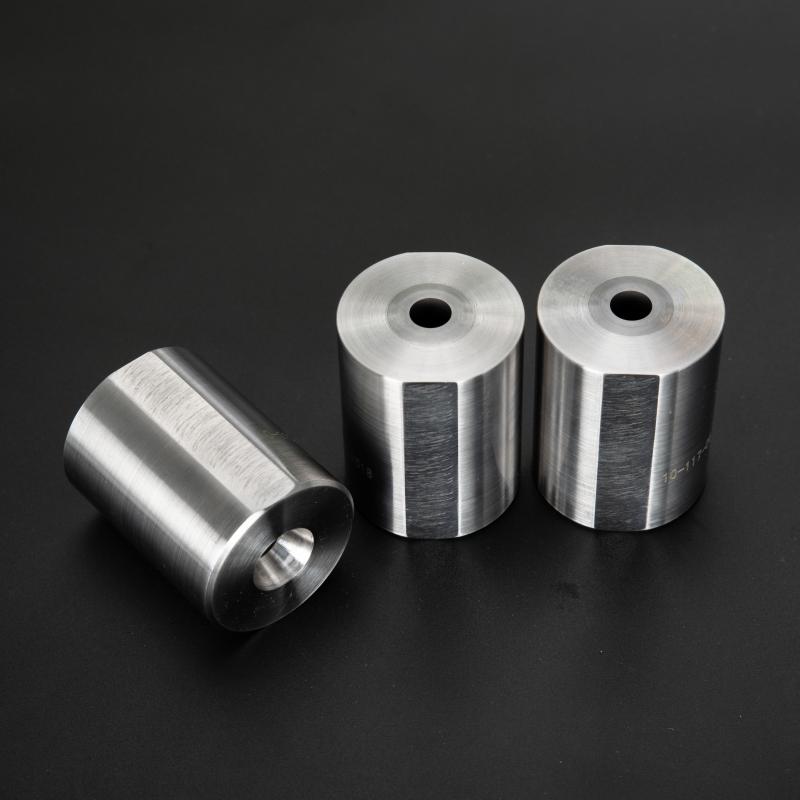Inner Cutting Die is a key tool widely used in cutting and stamping operations in industrial production. Its service life directly affects productivity, product quality, and production costs. Therefore, understanding the factors affecting the service life of Inner Cutting Die and taking corresponding measures to extend its service life are crucial for enterprises.

1. Overview of Inner Cutting Die Life
The service life of an Inner Cutting Die typically depends on several key factors:
Material Hardness and Wear Resistance: The hardness and wear resistance of the die material determines how many stamping or cutting operations the die can withstand. Higher hardness materials (such as Tungsten Carbide or high speed steel) typically have a longer service life.
Production environment and process conditions: Die life can fluctuate dramatically under different production environments, such as high temperatures, high humidity or extreme operating conditions. The precision of the production process, pressure, cutting speed, etc. can all affect the life of the mold.
Care and Maintenance: Regular maintenance and proper care can significantly extend the service life of the mold. Molds that are neglected for maintenance are prone to wear and deformation, which in turn shorten their life.
Under ideal operating conditions, the service life of Inner Cutting Die can reach tens to hundreds of thousands of cutting operations. However, in practice, the service life of the die varies according to different production environments and material choices.
2. Main factors affecting the service life of Inner Cutting Die
2.1 Material Selection
The core material of Inner Cutting Die is one of the key factors affecting its service life. Common die materials include:
Tungsten Carbide: Tungsten Carbide is one of the commonly used materials in the manufacture of molds, known for its extremely high hardness and wear resistance. Tungsten carbide molds are typically able to withstand a large number of cutting operations, and their wear resistance gives them a long life in high-intensity work environments.
High-speed steel: High-speed steel also has good hardness and wear resistance, but it is slightly less durable than tungsten carbide and is suitable for medium-intensity working conditions.
Tool steel: Suitable for lower intensity and medium precision machining tasks. Although its cost is lower, its relative life span is shorter.
High-quality materials can not only improve the service life of the mold, but also reduce the wear and tear of the mold during the production process, reduce the frequency of mold replacement, and thus improve production efficiency.
2.2 Production process conditions
The pressure, cutting speed, impact, etc. used in the production process directly affects the life of the mold. Too much pressure, too fast or incorrect cutting angle will increase the wear of the mold. Ensuring that the operating parameters are within the tolerances of the die design can effectively extend the life of the Inner Cutting Die.
In addition, the lubrication of the die is an important factor in its life. The use of suitable lubricants can reduce the friction between the die and the material, thus reducing wear.
2.3 Properties of production material
The hardness and thickness of the material being cut also have a great impact on the life of the Inner Cutting Die. For example, cutting high hardness materials (such as stainless steel, titanium alloy, etc.) will cause greater wear on the die than cutting soft materials (such as aluminum, plastic, etc.). Therefore, the selection of workpieces suitable for the material characteristics of the mold, and reasonable adjustment of cutting speed and pressure can effectively extend the service life of the mold.
2.4 Design and manufacturing precision of the mold
The design and manufacturing precision of Inner Cutting Die will also affect its life. High-precision manufacturing of the die has better cutting edges and a more stable structure, which can evenly distribute the cutting pressure and reduce stress concentration, thus reducing the risk of wear and fracture. In addition, a properly designed chip removal and cooling system also helps to reduce the heat generated during the cutting process, further protecting the die.
3. Strategies for Extending the Life of Inner Cutting Die
In order to maximize the service life of Inner Cutting Die, enterprises should adopt a series of maintenance measures and operation strategies in the production process.
3.1 Regular Inspection and Maintenance
Regular inspection and maintenance of the die is the key to prolonging its service life. By checking the cutting edge and surface condition of the die, problems can be found and repaired in time to avoid greater damage caused by small problems. Cleaning the surface of the mold and removing residual cutting materials and lubricants can keep the mold in normal working condition.
In addition, timely application of antirust oil or anticorrosion agent, especially when the mold is not in use for a long time, can effectively prevent the mold from rusting and protect its surface.
3.2 Use suitable lubricant
The use of lubricants can not only reduce the wear and tear of the mold, but also reduce the temperature during the cutting process to a certain extent, to prevent the mold from overheating. Choosing the right lubricant according to the production materials and process conditions can significantly reduce the wear and tear of the mold and improve the production efficiency.
3.3 Appropriate adjustment of production parameters
The cutting speed, pressure and other parameters should be adjusted according to the actual situation during the production process to avoid overload operation. Reasonable process conditions can reduce the burden on the mold, reduce wear and tear, thus prolonging the service life.
3.4 Improve the skill level of operators
The service life of the mold not only depends on the equipment and materials, but also closely related to the skill level of the operator. Skilled operators can accurately adjust the parameters of the equipment to ensure that the mold is running under the best conditions and reduce the damage to the mold caused by misoperation.
4. How to judge the end of life of Inner Cutting Die
As the number of times of use increases, the life of Inner Cutting Die will gradually approach the end. Common ways to determine the end of die life include:
Deterioration in Cutting Quality: If the quality of the parts being produced is deteriorating and there is an increase in edge burrs, it may be an indication that the cutting edge of the die is worn out.
Cracks or chips appear on the surface of the die: This is a sign that the die is about to fail and should be stopped immediately and replaced with a new die.
Increased cutting resistance: If you find a significant increase in resistance during the cutting process, and the operation becomes more difficult, it may be a sign that the cutting edge of the die is dulled or damaged, and should be inspected in time.
The service life of Inner Cutting Die is determined by a variety of factors, including die material, production process, maintenance measures and operating skills. Through reasonable selection of mold materials, precise control of production parameters, regular maintenance and proper lubrication, the service life of Inner Cutting Die can be effectively extended to improve production efficiency and reduce production costs. In actual production, enterprises should combine their own situation, develop scientific mold management and maintenance strategies to ensure the best use of the mold.











